Colt 1877 Thunderer Review
Explore the historic Colt 1877 Thunderer, a .41 caliber double-action revolver with barrel options from 2.5″ to 7.5″, 6-round capacity, and finishes in blued or nickel, complemented by wood or rubber grips. Introduced in 1877, it was Colt’s first venture into the double-action revolver market, a response to the increasing demand for a more rapid-firing handgun. This innovation marked a pivotal transition from the single-action revolvers of the Wild West to the more modern double-action designs that would become prevalent in the 20th century.
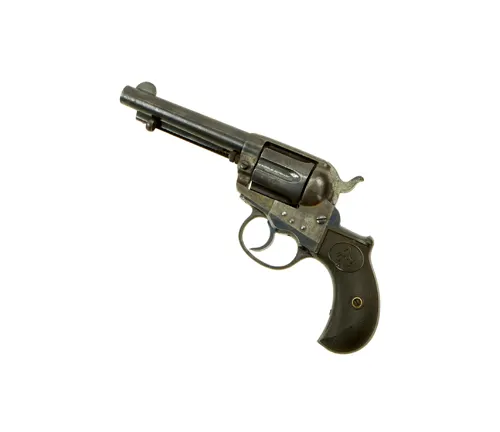
Colt 1877 Thunderer Specification
- Brand Colt
- Caliber .41
- Action Double-action
- Barrel Lengths Ranging from 2.5″ to 7.5″
- Capacity 6 rounds
- Finish Available in blued or nickel-plated
- Grips Wood or rubber
Historical Significance
The Colt 1877 Thunderer, despite its mechanical shortcomings, played a pivotal role in the evolution of firearms technology and remains a sought-after collector’s item today. Its place in American folklore is cemented by its association with notable historical figures and its appearance in numerous Western films and literature, symbolizing the rugged individualism and adventurous spirit of the American frontier.
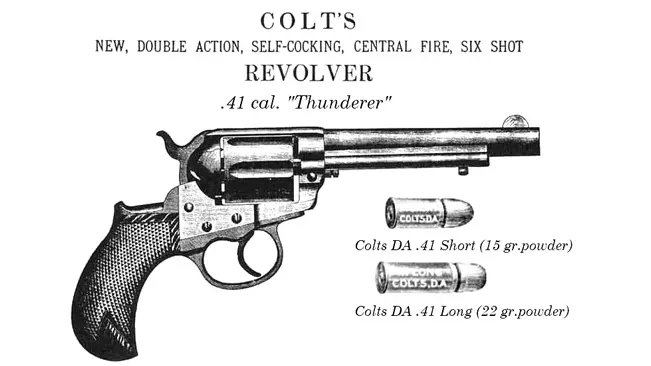
Collectors and historians value the Colt 1877 not just for its technological innovations but also for its aesthetic appeal and the stories it tells about the era in which it was used. It serves as a tangible link to a transformative period in American history, representing both the ingenuity and the challenges of advancing firearm technology in the late 19th century.
Design and Features
The Colt 1877 was designed by William Mason, one of Colt’s most prolific engineers, who played a crucial role in developing several iconic Colt firearms. The revolver featured a unique double-action mechanism, allowing it to be fired in rapid succession without the need to manually cock the hammer before each shot. This was a significant advancement over the single-action revolvers of the era, which required the shooter to pull back the hammer to rotate the cylinder and align the next chamber with the barrel.
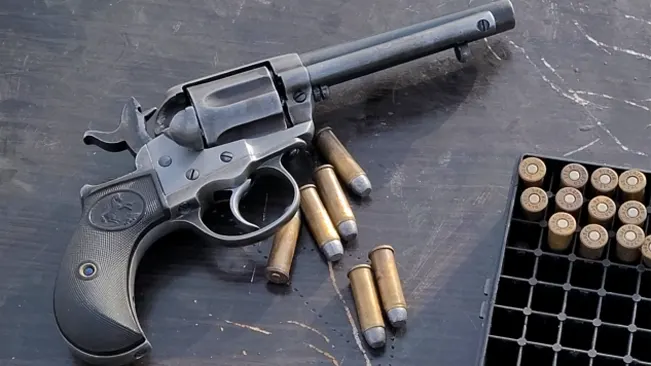
The 1877 model was available in two main calibers: the .38 caliber, nicknamed “Lightning,” and the more robust .41 caliber, known as “Thunderer.” The names aptly reflected the perceived power and speed of each version. It had a distinctive appearance, with a curved grip and a fluted cylinder, and was available in various barrel lengths to suit the preferences of different users.
Double-Action Mechanism
The Colt Model 1877 revolutionized firearm technology with its cutting-edge double-action mechanism. Unlike traditional single-action revolvers, which required the shooter to cock the hammer manually before each shot, the Model 1877 allowed users to fire rounds merely by squeezing the trigger.
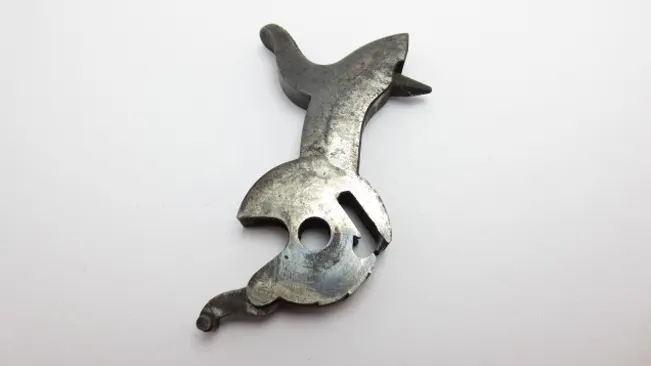
This innovation not only simplified the firing process but also significantly boosted the firearm’s rate of fire. As a result, users could engage targets more quickly and efficiently, marking a significant advancement in gun design and enhancing the effectiveness of the revolver in various situations. This feature made the Colt Model 1877 a highly sought-after weapon for both military and civilian use, showcasing the importance of technological innovation in firearms history.
Calibers
The Colt Model 1877 revolver offered versatility through its availability in two primary calibers, catering to a wide range of user preferences and needs. The .38 caliber version, known as the “Lightning,” was widely preferred for self-defense due to its manageable recoil and sufficient power, making it an ideal choice for personal protection and law enforcement purposes.
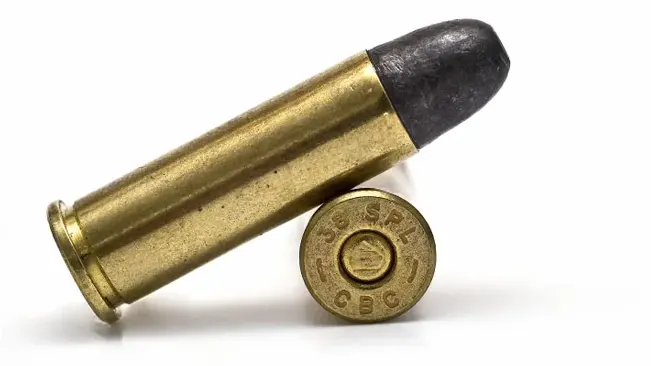
On the other hand, the .41 caliber variant, dubbed the “Thunderer,” was celebrated for its superior stopping power. This made it a favored option for those requiring a more formidable projectile, including frontiersmen and those in more hazardous professions. The differentiation in calibers allowed individuals to select a weapon that best fit their specific requirements, whether prioritizing ease of use and speed or the need for a more potent force in confrontations. This choice between the “Lightning” and the “Thunderer” underscored the Colt Model 1877’s adaptability to various situations, making it a versatile and valuable firearm in the late 19th century.
Barrel Lengths
The Colt Model 1877’s design accommodated diverse user requirements and preferences by offering an array of barrel lengths, ranging from the compact 2.5 inches to the extended 7.5 inches. The shorter 2.5-inch barrel was particularly suited for individuals seeking a revolver for concealed carry, as its diminutive size facilitated easy and discreet concealment.
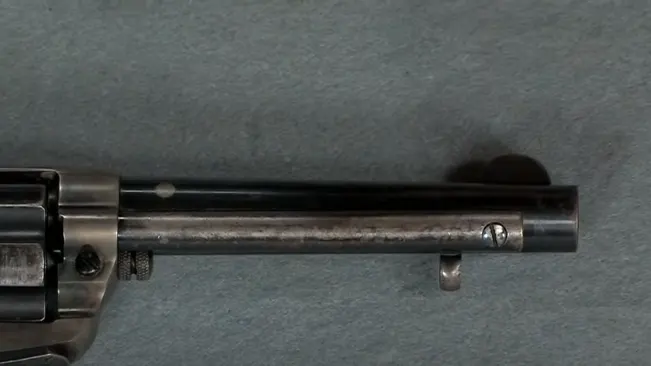
The intermediate 4.5-inch and 5.5-inch barrels struck a balance between portability and accuracy, making them popular choices for everyday carry and for those who valued a blend of convenience and shooting precision. The longest option, the 7.5-inch barrel, catered to users prioritizing accuracy over ease of carry. This extended length provided a longer sight radius, which in turn enhanced aiming accuracy, particularly beneficial for target shooting or situations where precision was paramount. By offering these varied barrel lengths, the Colt Model 1877 could serve a wide spectrum of shooting disciplines and personal defense needs, allowing shooters to select a model that best aligns with their specific objectives and lifestyle.
Six-Round Cylinder
The Colt Model 1877 was equipped with a six-round cylinder, a common feature among revolvers from its era, which adeptly balanced effective firepower with practical considerations of size and weight. This configuration allowed users to carry a significant amount of ammunition without the revolver becoming overly cumbersome, making it a practical choice for both daily carry and situational use.
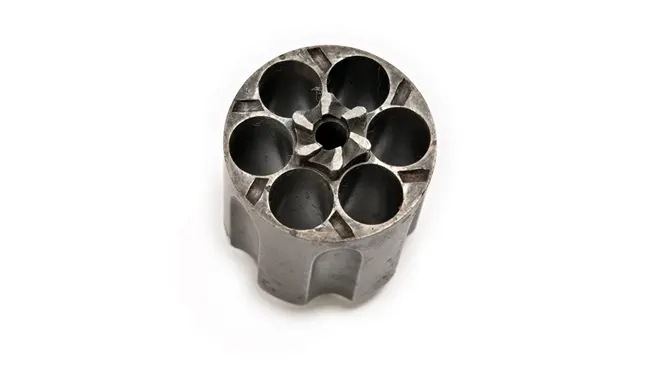
The six-round capacity ensured that the wielder had enough shots for self-defense or law enforcement engagements, without the need for immediate reloading, which could be crucial in high-pressure situations. Furthermore, this balance made the revolver more versatile, appealing to a broad audience, including civilians looking for a reliable self-defense weapon and law enforcement officers requiring a dependable sidearm. The six-round cylinder thus represented a thoughtful compromise between the need for adequate firepower and the practicalities of everyday carry, contributing to the Colt Model 1877’s popularity and enduring legacy.
Iron Sights
The Colt Model 1877 featured traditional iron sights, a standard aiming system of the time, which included a basic yet functional setup with a rear notch and a front blade. This arrangement facilitated relatively straightforward aiming, enabling shooters to align their sights with the target with a degree of precision that was commendable for the period.
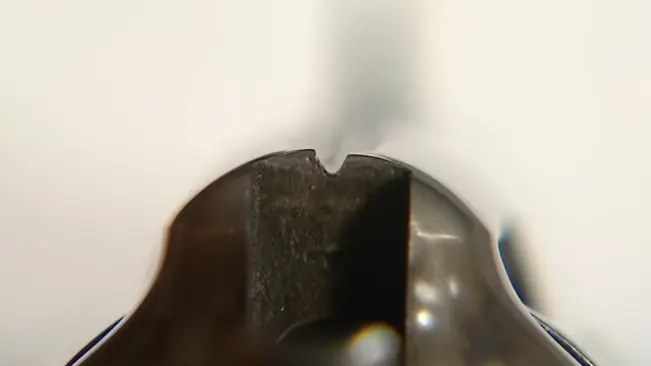
The simplicity of the iron sights contributed to the revolver’s ease of use, making it accessible to a wide range of users, from experienced shooters to novices. While not as sophisticated as modern optics, these iron sights were effective for the short to medium-range encounters for which the revolver was typically used. The rear notch provided a clear reference point for the shooter, while the front blade was designed to offer a precise aiming mark. This setup underscored the practical and utilitarian design ethos of the era, focusing on reliability and functionality without unnecessary complexity. In a time when quick and reliable targeting was essential, the iron sights on the Colt Model 1877 served their purpose well, contributing to the firearm’s overall effectiveness and enduring popularity.
Articulated Trigger Guard
The Colt Model 1877 featured an innovative design element with its articulated trigger guard, enhancing both its aesthetic appeal and functional ergonomics. This distinctive feature allowed for a more adaptable grip, accommodating shooters with varying hand sizes and preferences, thus improving the overall handling and comfort during use.
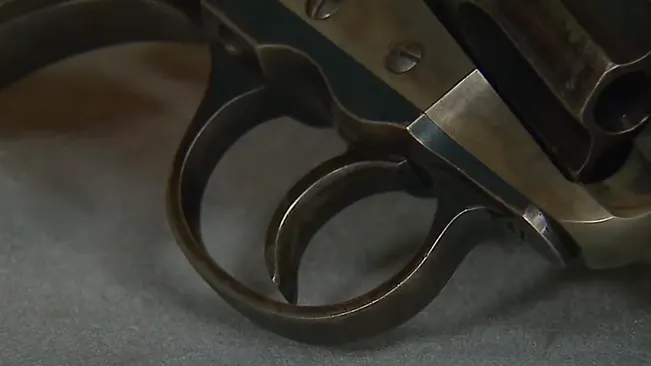
The articulated nature of the trigger guard meant it could move or be adjusted to better fit the user’s finger, facilitating a smoother trigger pull and potentially improving shooting accuracy and speed. This design innovation not only set the Model 1877 apart from other revolvers of the era in terms of appearance but also demonstrated a commitment to user-friendly features that considered the practicalities of shooting. The incorporation of such an ergonomic enhancement reflected a thoughtful approach to firearm design, prioritizing ease of use and effectiveness. This unique characteristic contributed to the revolver’s reputation for innovation and usability, marking it as a weapon that combined traditional functionality with forward-thinking design elements.
Pros and Cons
Pros
- As Colt’s first double-action revolver, it holds a special place in firearms history.
- The double-action mechanism allows for quicker shooting without manual cocking.
- Offered in multiple barrel lengths to suit various preferences and uses.
- Highly sought after by collectors due to its history and rarity.
Cons
- The intricate mechanism can be prone to malfunction if not properly maintained.
- Compared to single-action revolvers, its reliability can be less consistent.
- While a historical masterpiece, it may not meet the practical needs or preferences of modern shooters.
My Personal Maintenance Routine Colt 1877 Thunderer
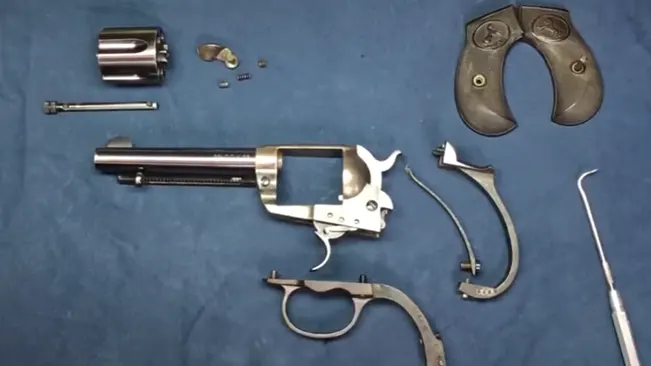
- Regular Inspection Frequently check for signs of wear, corrosion, or damage. This includes inspecting the hammer, trigger mechanism, and cylinder for proper operation.
- Cleaning After Use Always clean the revolver thoroughly after firing. Use a soft cloth and appropriate gun cleaning solvents to remove gunpowder residue and debris from the barrel and cylinder.
- Lubrication Apply a light, high-quality gun oil to moving parts to ensure smooth operation and prevent rust. Avoid over-lubricating, as this can attract dirt and grime.
- Barrel Care Use a bore brush and cleaning rod to clean the barrel’s interior. Be gentle to avoid scratching the bore.
- Cylinder Maintenance Remove the cylinder and clean each chamber with a brush and solvent. Check the cylinder’s alignment and smooth rotation.
- Handling Springs with Care Be cautious when cleaning around springs and other delicate components to avoid bending or breaking them.
- Rust Prevention Apply a thin coat of oil to all metal surfaces to protect against rust, especially if you live in a humid climate or store the revolver for extended periods.
- Wood Grip Care If your Thunderer has wooden grips, treat them with a wood conditioner to prevent drying and cracking.
- Storage Store the revolver in a cool, dry place, preferably in a padded case to protect it from moisture and physical damage.
- Professional Servicing Periodically, have the revolver checked by a professional gunsmith who is familiar with antique firearms. They can address any internal wear or mechanical issues that may not be evident to the casual observer.
Safety Tips

- Never assume the revolver is unloaded. Always treat the firearm as if it’s loaded, even when you’re sure it’s not, to prevent accidental discharge.
- Before cleaning or performing maintenance, ensure the revolver is completely unloaded. Open the cylinder and visually inspect each chamber to confirm they are empty.
- Only use ammunition that matches the revolver’s specifications. Using incorrect or modern high-pressure ammunition can damage the firearm and pose a serious safety risk.
- When handling, always keep the muzzle pointed in a safe direction and keep your finger off the trigger until you are ready to shoot. This prevents accidental firing.
- Store the revolver unloaded and in a secure location, away from children and unauthorized users. Use a gun safe or locking device to ensure it cannot be accessed by anyone but you.
Colt 1877 Thunderer: My Expert Ratings and Insights
| Aspect | Review Summary | Score |
|---|---|---|
| Cleaning Frequency | Regular cleaning post-use ensures optimal performance and longevity. Adherence to this routine is strict. | 9/10 |
| Lubrication | Proper lubrication of moving parts to prevent wear and ensure smooth operation. Consistently applied. | 9/10 |
| Inspection | Detailed inspection for wear and tear or damage after each use, maintaining high safety standards. | 8/10 |
| Storage Conditions | Firearms are stored in a controlled environment to prevent rust and damage. Care is taken for ideal conditions. | 8/10 |
| Ammunition Check | Regular checking and rotation of ammunition to ensure reliability and prevent aging issues. | 8/10 |
| Parts Replacement | Timely replacement of worn-out parts to maintain functionality and safety. Proactive approach. | 8/10 |
| Professional Servicing | Annual check-up by a professional to ensure deep maintenance and functionality. | 7/10 |
| Accessory Care | Care and maintenance of accessories (holsters, sights) to ensure they remain functional and effective. | 8/10 |
| Training Regularity | Consistent training to maintain proficiency and identify potential issues with handling or operation. | 8/10 |
| Safety Gear Maintenance | Regular checking and maintenance of safety gear (gloves, glasses) to ensure they provide proper protection. | 8/10 |
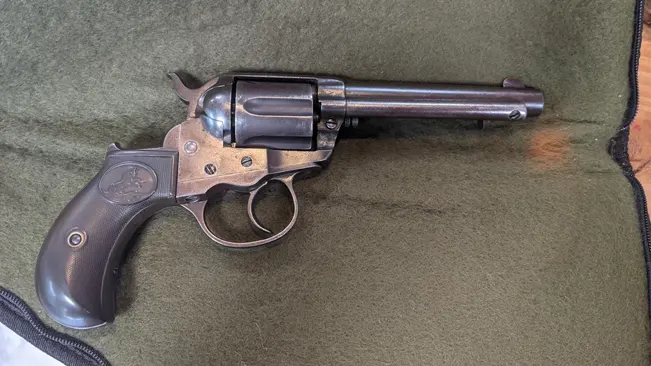
Conclusions
The Colt Model 1877, with its groundbreaking double-action mechanism, marked a significant evolution in revolver technology, offering shooters the revolutionary ability to fire more rapidly without manually cocking the hammer for each shot. Available in the notable calibers of .38 (Lightning) and .41 (Thunderer) and featuring a variety of barrel lengths, the Model 1877 catered to diverse preferences and needs, from self-defense to law enforcement. Despite its mechanical complexities and maintenance demands, the revolver’s historical significance, innovative design, and role in the lore of the American West have cemented its legacy as a prized collector’s item and a pivotal chapter in the story of American firearms development.
FAQs about Colt 1877 Thunderer
- What is the Colt Model 1877?
The Colt Model 1877 is a double-action revolver that was the first of its kind produced by Colt, available in .38 caliber (Lightning) and .41 caliber (Thunderer). - When was the Colt Model 1877 introduced?
The Colt Model 1877 was introduced in 1877 and continued in production until 1909. - What makes the Colt Model 1877 unique?
Its unique feature is the double-action mechanism, allowing for quicker firing without manually cocking the hammer for each shot. - Were there different versions of the Colt Model 1877?
Yes, it was available in two main versions: the “Lightning” for the .38 caliber and the “Thunderer” for the .41 caliber. - What were the common barrel lengths for the Colt Model 1877?
Barrel lengths varied, including 2.5 inches, 4.5 inches, 5.5 inches, and up to 7.5 inches for different uses and preferences. - How many rounds could the Colt Model 1877 hold?
The revolver had a six-round cylinder. - What were the finish options for the Colt Model 1877?
It typically came with either a blued or nickel-plated finish, with grips made of wood or sometimes rubber. - Was the Colt Model 1877 reliable?
While innovative, its complex mechanism could be prone to issues if not properly maintained, making it less reliable than some single-action counterparts. - Who used the Colt Model 1877?
It was popular among lawmen, outlaws, and civilians alike for self-defense and as a sidearm due to its rapid-fire capability. - Why is the Colt Model 1877 collectible today?
Its significance as Colt’s first double-action revolver, historical relevance, and the role it played in American Western history make it highly collectible.
We’d love to hear from you! Share your personal experiences and thoughts about the Colt 1877 Thunderer in the comments section below. Whether you’re a collector, a historian, or someone who appreciates the craftsmanship and history of classic firearms, your insights could help fellow enthusiasts gain a deeper understanding of this iconic revolver. Your stories and perspectives on the Thunderer could also assist potential collectors in making informed decisions. Let’s keep the legacy of this remarkable piece of firearm history alive through our shared knowledge and experiences!
Latest Post
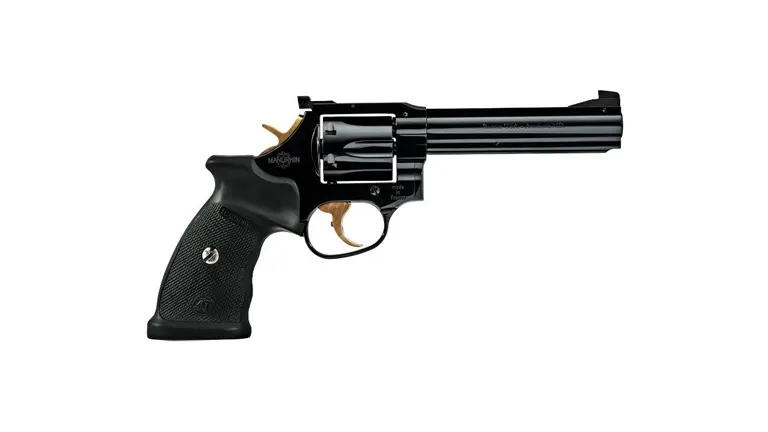
Manurhin MR73 Review
Experience the precision of the Manurhin MR73, a revolver chambered in .357 Magnum and .38...March 8, 2024
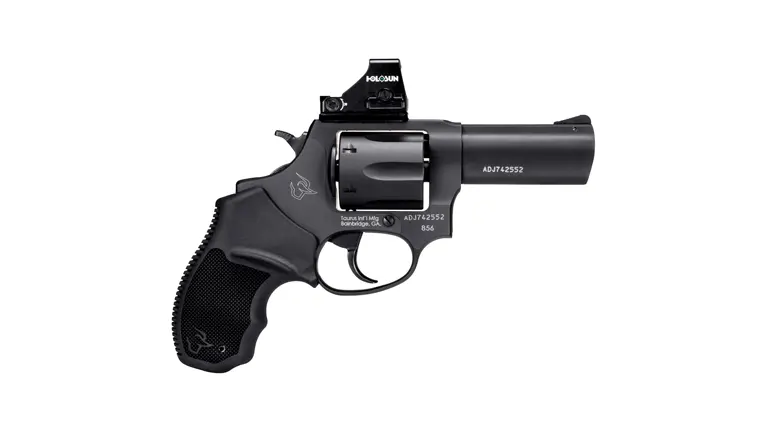
Taurus 856 TORO Review
Discover the Taurus 856 TORO, a compact .38 Special revolver with a 6-round capacity. Featuring...March 8, 2024

Taurus Defender 856 Review
Explore the Taurus Defender 856, a .38 Special (+P) revolver with a 6-round capacity and...March 8, 2024

Taurus 856 Executive Grade Review
Introducing the Taurus 856 Executive Grade in .38 Special +P, featuring a 6-round capacity and...March 8, 2024
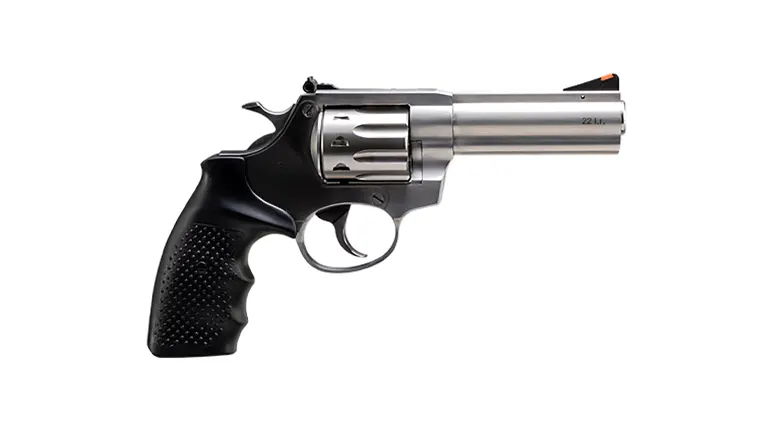
Rock Island Armory AL22M Review
Discover the Rock Island Armory AL22M, a .22 Magnum revolver with an 8-round capacity. Features...March 8, 2024
Weekly Newsletter
Do you want to get notified when a new article is added to Guncritic? Sign up for our newsletter and you'll be among the first to find out about new articles and reviews.
Comment